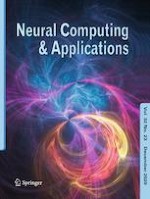04.05.2020 | Original Article
LSTM-based indoor air temperature prediction framework for HVAC systems in smart buildings
Erschienen in: Neural Computing and Applications | Ausgabe 23/2020
EinloggenAktivieren Sie unsere intelligente Suche, um passende Fachinhalte oder Patente zu finden.
Wählen Sie Textabschnitte aus um mit Künstlicher Intelligenz passenden Patente zu finden. powered by
Markieren Sie Textabschnitte, um KI-gestützt weitere passende Inhalte zu finden. powered by
